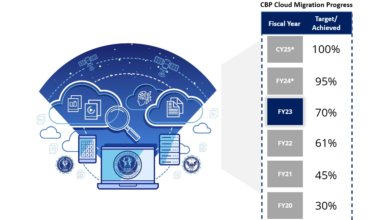UK firms flocking to microservices amid sharpened cloud optimization focus

UK firms are turning to microservices in a bid to sharpen cloud optimization efforts and reducing their spending, according to new research from Information Services Group (ISG).
Many companies that have moved on-prem workloads to different hyperscaler environments are concerned over data visibility, interoperability, and vendor lock-in, according to company’s 2023 Provider Lens Multi Public Cloud Services.
These lingering concerns have prompted many to turn to service providers in a bid to shake up their cloud approach and reduce burdens placed on developer teams, the report noted.
“Companies in the UK that have established hyperscaler environments are looking for help,” said Ola Chowning, ISG partner, North Europe.
“They are actively seeking service providers that can offer FinOps solutions to monitor and control their overall spending.”
Because microservices are distinct compartmentalized functions that exist within a larger application, they are easier to scale up and down, the report said, and their role will continue to grow in significance as enterprises try to avoid the limitations that come with running monolithic applications in the cloud.
RELATED RESOURCE
Find out why cloud architecture provides an ideal solution to fluctuations in demand for computing resources
DOWNLOAD NOW
A few tools, such as those that specifically focus on streamlining cloud governance, enhancing visibility, and flagging noncompliance issues across multiple cloud environments, were typically found to run more effectively inside a microservices architecture.
Different industries are seeing different levels of adoption, the report noted. The UK’s highly-regulated financial industry, for example, is required to comply with certain data transit norms, reducing its use of microservices compared with less-regulated hi-tech companies.
As a result, these limitations are inhibiting certain industries from leveraging a multi-cloud approach, which has grown in popularity in recent years as organizations seek to harness a more diverse range of cloud providers.
Cloud optimization a key focus for larger enterprises
Larger enterprises were typically found to have cumbersome, siloed data center environments, meaning that it typically takes them at least a year to streamline applications during the cloud migration phase.
Many continue to use dedicated applications on the hyperscalers’ platforms, meaning that they don’t take advantage of the benefits of scale, the report said.
Meanwhile, inflationary pressure has also ramped up operational expenditure.
A recent study from Sapio Research found that cost optimization is the biggest challenge IT decision makers face, with 54% stating they’re evaluating new investments more carefully because of the economic downturn.
With many organizations reporting that underused or overprovisioned resources are causing avoidable cloud expenses, FinOps, an operational framework which maximizes the business value of cloud, is becoming increasingly attractive.
More than six-in-ten businesses globally have some sort of FinOps system in place, Sapio revealed, with another quarter saying they plan to adopt it in the next three years.



